 |

| |
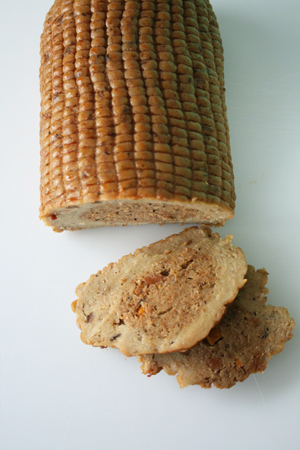
If you want to, you can fool some of the people some of the time. With a wine-and-mushroom sauce, this Celebration Roast could pass for a Poitrine de Veau Farci (stuffed breast of veal). It’s just one of a great line of grain-based products. Photography by Hannah Kaminsky | THE NIBBLE. |
| WHAT IT IS: A line of 100% vegan grain-based products that look and taste like meat. |
| WHY IT’S DIFFERENT: Not only does it look and taste like meat; it tastes like delicious meat. Even when cooking, the aromas are meatylicious. |
WHY WE LOVE IT: We could say that it’s the best alternative to meat we’ve ever had; but it’s better—more flavorful and healthier—than a lot of meat we’ve had! It makes it easy for us to do our part to save the planet by going meatless two days a week, while we still serve “meaty” food to those who want it. |
| WHERE TO BUY IT: FieldRoast.com |
|
|
 |

Meet Field Roast Grain Meat: Vegan “Meat” That Could Fool You
CAPSULE REPORT: We have something to introduce today that may seem out-of-the-box for THE NIBBLE. Let us assure you: It’s so delicious we keep buying more and more. If you’re looking for a healthy hot dog solution, a delicious vegan dish or a way to help the planet reduce greenhouse gases (more about that in the main review), Field Roast Grain Meat is it!
If you’re not a vegetarian or vegan, you may have enjoyed a few jokes about Tofurkey or Veat vegetarian meat substitutes. Even some vegetarians we know turn their noses up at “fake meat” on principle. But at THE NIBBLE, we’re only in it for food, glorious food.
We’ve tried our fair share of vegetarian meats. Some we hope will never cross our plate again. Others, like the tempeh bacon served in a “TLT” sandwich (tempeh bacon, lettuce and tomato) with Nasoya’s Nayonaise (delicious!) at a local eatery, are a delight (“I can’t believe it isn’t bacon!”). We’re not vegetarian; we’re an omnivore. We eat anything that tastes good.
So when we first tasted a variety of products from the Field Roast Grain Meat Co., we couldn’t believe it wasn’t meat. Not knowing what “grain meat” was, we thought it might be a mixture of grain and meat. Whatever it was, we loved it. When we found out it was 100% vegetarian and vegan, we knew we’d found our next favorite culinary magician.
Whether you’re vegetarian, looking to give up meat a day or two a week to help the environment or your health, or simply looking for a new and delicious food, meet this great “new meat,” Field Roast grain meat. Read more about it in the full review below.
|
| |
|
|
THE NIBBLE does not sell the foods we review
or receive fees from manufacturers for recommending them.
Our recommendations are based purely on our opinion, after tasting thousands of products each year, that they represent the best in their respective categories. |
More Favorite Vegan Products
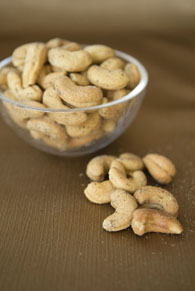 |
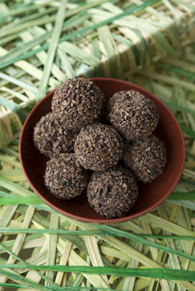 |
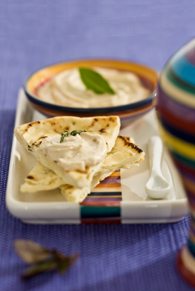 |
| Squirrel Brand Nuts. From transcendent truffled almonds to peppered cashews, the aroma of these nuts had us at “hello.” But after we tasted them, we were ready to propose. Read our review. |
Uli Mana Truffles. These raw cacao, organic truffles are intensely wonderful, and have become a NIBBLE office favorite. The brownies and chocolate spread are also divine. Read our review of Uli Mana. |
Cool Beans Bean Dip. This purée of slow-cooked beans, lemon, garlic and fresh herbs is delightful for dipping crudités and breadsticks and for spreading on bread and crackers. Read our review of Cool Beans. |
Meet Field Roast Grain Meat: Vegan “Meat” That Could Fool
You
INDEX OF REVIEW
This is Page 1 of a two-page article. Click on the black links to visit other pages.
|
MORE TO DISCOVER
|
Introduction To Grain Meat
The story of grain meat goes back to seventh-century China and the quests by Buddhist monks to find options for their vegetarian diet. Grain meat was discovered by accident, when making dough from wheat flour in a tub of water. The more they kneaded, the more starch came out of the dough; and after considerable kneading they were left with a chewy, protein-rich substance—wheat gluten—that could be simmered and flavored. They called this new food mien ching, “Buddah’s food.”
Over time, Buddah’s food made its way to Japan, where it was simmered in soy sauce with kombu (seaweed) and ginger, and became a new version of wheat gluten called seitan. These two “grain meat” products were virtually unknown in the West until the natural food movement of the 1970s sought options worldwide. Seitan became a cornerstone of the macrobiotic diet.
In the late 1990s, a chef in Seattle who was trying to create a vegetarian teriyaki wrap began working with mien ching and seitan. By adding European flavors, he created the third version of grain meat: field roast—a roast made not from meat, but from what is grown in the field. Pretty amazing!
|
|
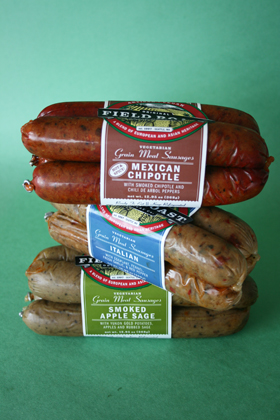
No one would guess that these Italian, Mexican Chipotle and Apple Sage sausages are vegan. They taste and smell like real meat. Read more about them on the next page.
|
Why Non-Vegetarians Should Be Interested
If you’re a 100% meat-eating person who has never taken an interest in vegetarian products, why should you take a look at Field Roast products? Because of:
- Great Taste. You like fine food, and these products are delicious.
- Health. Eating less meat and more high-fiber grain and veggies is healthier for you.
- The Environment. Eating less meat and dairy products helps combat global warming. More greenhouse gas is generated from animal-generated methane* than from automobile carbon emissions. We give up all foods from methane-generating animals two days a week as part of our own “save the planet” program—and we eat just as well and happily as we do on the other five days.
Follow us to Page 2 to see the glories of Field Roast Grain Meat.
—Karen Hochman
Continue To Page 2: Field Roast Varieties
Go To The Article Index Above
*As manure breaks down, it generates methane gas; and equally as significant, cows “burp” methane as part of their digestive process. Methane is a greenhouse gas and, in the atmosphere, contributes to global warming. Cows burp an abundant supply of it every day — about 280 liters per animal (in other words, the average cow could fill 140 two-liter soda bottles with gas daily). Sheep, pigs and poultry also contribute to the problem, although fish do not. Methane is second to carbon dioxide on the list of harmful greenhouse gases. According to the Intergovernmental Panel on Climate Change, it is 21 times better at trapping heat in the atmosphere than CO2, and therefore a bigger contributor to global warming.
Do you have friends who would enjoy THE NIBBLE?
Click here to send them an invitation to sign up for their own copy. |
© Copyright 2004-2025 Lifestyle Direct, Inc. All rights
reserved. All information contained herein is subject to change at any time
without notice. All details must be directly confirmed with manufacturers, service
establishments and other third parties. The material in this e-zine may not
be reproduced, distributed, transmitted, cached, or otherwise used, except with
the prior written permission of Lifestyle Direct, Inc.
|
|

|
 |











